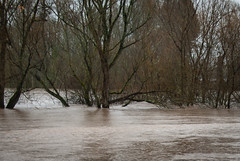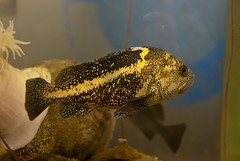 Heavy rain and melting snowpack that flooded Western Oregon last week turned creeks and rivers into broad, brown torrents that might look like bad news for fish. But an Oregon Sea Grant fisheries specialist says his research suggests the opposite.
Heavy rain and melting snowpack that flooded Western Oregon last week turned creeks and rivers into broad, brown torrents that might look like bad news for fish. But an Oregon Sea Grant fisheries specialist says his research suggests the opposite.
Guillermo Giannico, a research professor in Oregon State University’s Department of Fisheries and Wildlife, has conducted studies showing that fish – especially native species – can find refuge and food in flooded grass-seed fields.
Giannico’s research grew out of a project by fellow OSU researcher Stan Gregory to map the historic path of the Willamette River. The Willamette and its many tributaries once were more complex, braided streams. Multiple channels dispersed the impact of flooding, but dams, housing developments and forest transition have since funneled many rivers into single channels that run fast and furious during floods.
Giannico and others wondered how fish adapted to the change. Floods have happened for thousands of years, he said, and fish traditionally escaped high water in the main river stems by moving to off-channel habitat.
Turns out they still do. During seasonal floods, researchers took a look at ditches, low-lying farmland and other spots that are above water most of the year. To their surprise, they found 14 fish species — 11 of them native.
“That’s high diversity for this area, more than I would have bet we were going to get,” Giannico said.
Giannico noted a couple implications from the findings. Salmon, steelhead and other native fish, he said, are keenly tuned to changes in light and water temperature, and move to sheltering habitat — even if it turns out to be a flooded grass seed field. Invasive fish, often warm-water species, don’t get it. They’re unable to respond to the clues. As a result, native fish get a temporary break from predation and competition for food.
“Floods have always been a dynamic part of the system, much the same way that snow is for elk in Yellowstone,” said Giannico “Over time, animals will adapt to get the most out of their habitat. We have found that native fish have adjusted their behavior to use these floodplains, mostly in agricultural lands, to great benefit.”
Read more:
- Report in The Oregonian
- OSU news release
- The Life Aquatic in Flooded Fields (Oregon’s Agricultural Progress)



